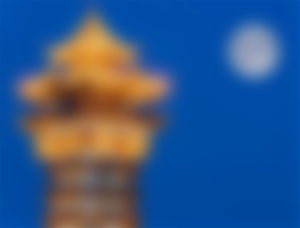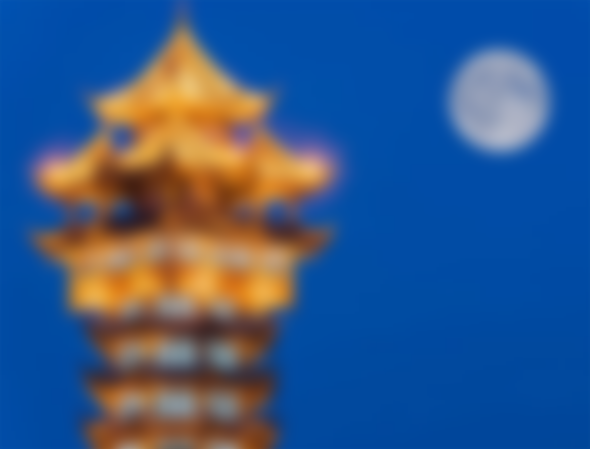The Chinese are changing the street lighting: the city of Chengdun is launching an artificial moon, i.e. lighting satellite this year. This artificial moon is designed to complement the moon's reflection during the night, although it will be eight times brighter.
By the way, Chengdu is the capital and largest city of Sichuan province in southwest China.
It is located on the edge of the fertile plains of the Red Basin and because of its agricultural wealth, Chengdu is sometimes called the "land of honey and milk".
Chengdu has a reputation as a very "relaxed" city with a population of 14 million and is one of the most desirable megacities to live in all of China.
Two years ago, the Chinese media reported that China had an ambitious plan to launch a "fake moon" into space to light up the night sky. And in the city Chengdu.

This news, which was presented for the first time at the national gathering on mass innovation and entrepreneurship, caused audience fascination, skepticism on the part of scientists, a lot of questions, as well as complete ridicule of the public.
Can China really "light up" the night sky?
Chengdu plans to launch a satellite to illuminate the city in the next two years as a replacement for its street lighting, something like an artificial moon.
The satellite would mimic the glow of a real moon with strong enough light energy that could illuminate city streets at night.
Reports have not given any details on what the Chinese "Moon" will look like, but it is known to reflect sunlight in an area 10 to 80 km with a light eight times stronger than the real Moon. The accuracy and intensity of the light could be controlled from Earth by which the satellite would be 500 km away, about the same altitude as the international space station. (The moon orbits an average of about 380,000 km above the Earth.).
The artificial Moon will have a light-sensitive reflective layer on its surface that will direct the Sun's rays towards the Earth with solar wings whose angles can be adjusted to the angle that would be best for the light to be precisely directed to specific and targeted surfaces.
China's space targets have not been a secret for some time, in the 1990s Russia experimented with using an orbital mirror and directing light at some cities in the northwestern part of its country. The project ended in 1999 as a failure because the big mirror unfortunately exploded in the atmosphere, and even American projects on similar topics, such as the last one, the launch of the artificial star Humanity Star into space, were not successfully completed.
The Chinese claim that the testing of the satellite, "the second Moon", started two years ago, and that the technology is now sufficiently developed that the project should be completed this year.
Apart from being an urban and interesting city for tourists, Chengdu is known for the largest center for research and protection of pandas in the world, a conservation center where visitors can see endangered giant pandas in their natural habitat. There is a fear of a certain part of the audience who thinks that the light that will be reflected from space does not make negative aspects of the daily routine, but already sensitive and endangered species. Many studies show that many animals are very sensitive to the light and phases of the moon.
However, news is coming from the Harbin Institute of Technology that this kind of light emitted by the satellite will not endanger the habits of the animals, since it is not a beam but a light described as twilight, pleasant and natural. Kang Weimini, director of the Institute of Oprica, explained that the light produced by the artificial satellite is similar to dusk, so it should not affect the routine of the animals.
One month is enough for most of us, but not for the officials of the Chinese city of Chengdu. They want two Moons, for a start, and are willing to commit to it and invest money to make it happen.
Doctors draw attention to the risk of high blood pressure and diabetes, if people are exposed to strong artificial light before going to bed.
The results of a study involving 116 healthy subjects aged 18 to 30 years show that exposure to strong artificial light before going to sleep can reduce sleep quality and increase health risks.
Could this "artificial moon" still endanger the health of humans and animals, regardless of the fact that the light of the false moon will resemble twilight?
Thanks for reading the article!
Greetings from @MarijaJak !

stupidity ... we destroy our own planet.